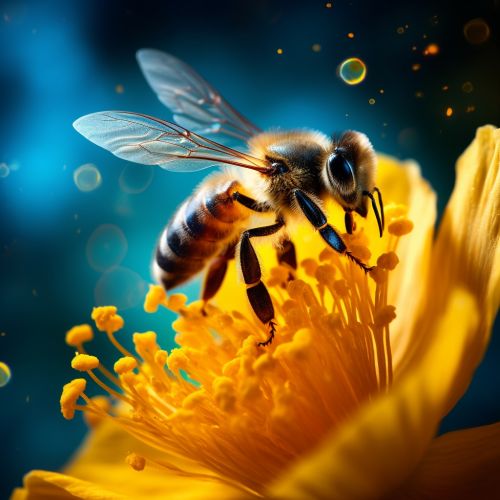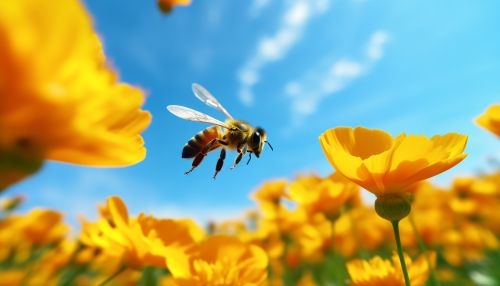Plant-Insect Interactions
Introduction
Plant-insect interactions are complex relationships that have evolved over millions of years. These interactions can be mutualistic, where both organisms benefit, or antagonistic, where one organism benefits at the expense of the other. The study of plant-insect interactions is a crucial aspect of ecology, botany, and entomology, providing insights into ecosystem dynamics, evolution, and species survival strategies.
Mutualistic Interactions
Mutualistic interactions between plants and insects often involve pollination or seed dispersal. In these relationships, both the plant and the insect derive benefits.
Pollination
Pollination is one of the most well-known mutualistic interactions between plants and insects. Insects such as bees, butterflies, and beetles visit flowers to feed on nectar or pollen, and in the process, they transfer pollen from the male anthers of a flower to the female stigma of the same or another flower. This results in fertilization and the production of seeds.


Seed Dispersal
Insects also play a crucial role in seed dispersal. Some plants produce fruits or seeds with structures that allow them to attach to the bodies of insects. As the insects move from place to place, they inadvertently carry the seeds with them, facilitating the spread of the plant species.
Antagonistic Interactions
Antagonistic interactions between plants and insects typically involve herbivory, where insects feed on plant tissues, often causing damage to the plant.
Herbivory
Herbivory is a common form of plant-insect interaction. Many insects, such as caterpillars, beetles, and aphids, feed on plant tissues. This can cause significant damage to the plant, affecting its growth and reproduction. However, plants have evolved various defenses against herbivory, including the production of toxic or deterrent chemicals, physical barriers like thorns or tough leaves, and the attraction of predatory insects that feed on the herbivores.
Plant Defenses
Plants have evolved a variety of defenses to deter insect herbivores. These defenses can be physical, chemical, or involve other organisms.
Physical Defenses
Physical defenses include structural adaptations like thorns, spines, and tough or waxy leaves that make it difficult for insects to feed on the plant. Some plants also have trichomes, hair-like structures on the leaf surface that can deter insects or trap and kill smaller insect species.
Chemical Defenses
Chemical defenses involve the production of secondary metabolites that can deter insect feeding. These chemicals can be toxic to insects, affect their growth and development, or make the plant less palatable. Some plants can even produce specific chemicals in response to insect attack, a phenomenon known as induced resistance.
Biological Defenses
Biological defenses involve other organisms. Some plants can attract predatory insects or parasitoids that attack the herbivorous insects. This is often achieved through the release of volatile compounds that are specifically attractive to these beneficial insects.
Insect Adaptations
Just as plants have evolved defenses against herbivory, insects have also evolved various adaptations to overcome these defenses.
Detoxification
Many insects have evolved the ability to detoxify the harmful chemicals produced by plants. They can either metabolize these chemicals into less harmful compounds or sequester them in their bodies and use them as a defense against their own predators.
Behavioral Adaptations
Insects have also developed behavioral adaptations to avoid or overcome plant defenses. For example, some insects feed at times when plant defenses are lower, or they preferentially feed on plant parts that are less defended. Some insects can also cut the veins of leaves to drain defensive chemicals before feeding.
Coevolution
The ongoing battle between plant defenses and insect adaptations is a prime example of coevolution, where changes in one species drive adaptations in the other. This dynamic process has led to the incredible diversity of plant-insect interactions we see today.
Impact on Ecosystems and Agriculture
Plant-insect interactions have significant impacts on ecosystems and agriculture. They influence plant diversity, community structure, and ecosystem processes. In agriculture, insect herbivores can cause significant crop losses, but insects also provide essential services like pollination and natural pest control.
